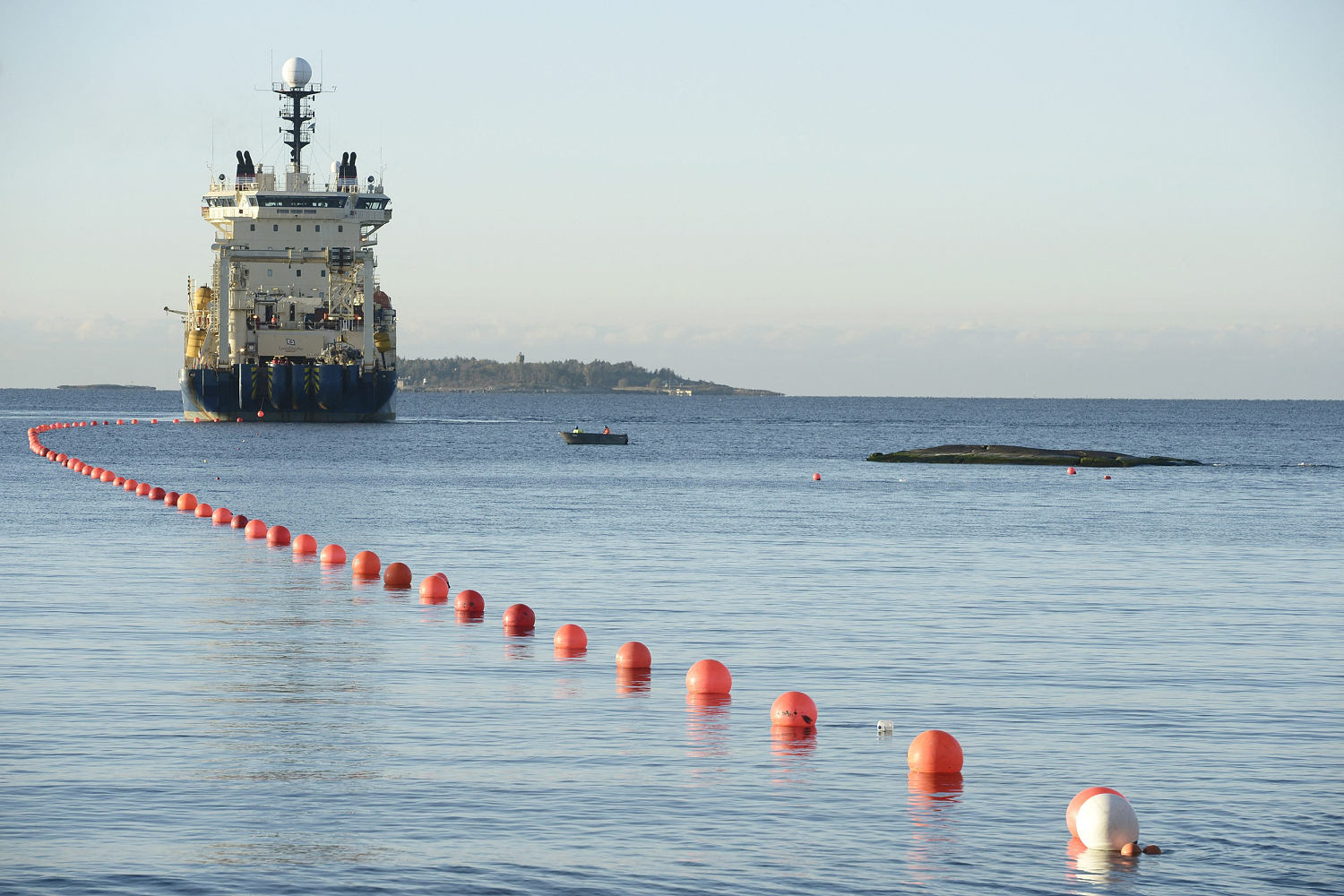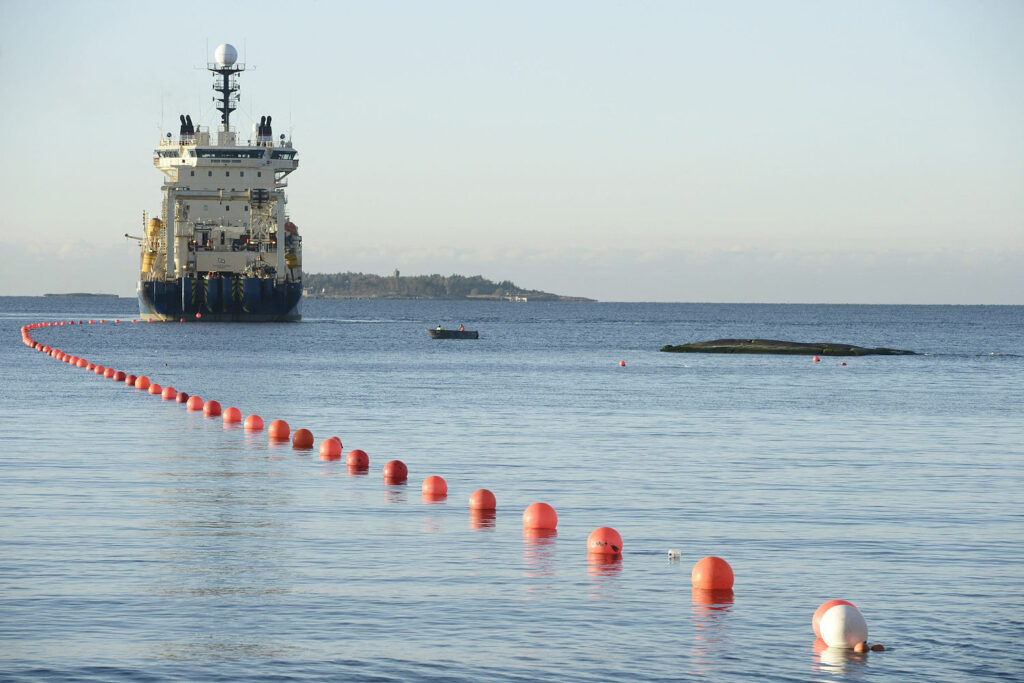
A Western security official told NBC News earlier this month that Russia was responsible for sending two incendiary devices to DHL logistics hubs in Germany and the United Kingdom in July, as part of a wider sabotage campaign to possibly start fires aboard aircraft bound for North America.
The head of Britain’s intelligence agency MI5 said last month that Russia’s GRU intelligence service was on a mission to generate “sustained mayhem on British and European streets.”
Both Finland and Sweden have joined NATO in the past two years, bolstering the alliance’s eastern flank in the wake of Russia’s full-scale invasion of Ukraine.
Russia has repeatedly rejected allegations from Western countries that it is orchestrating a sabotage campaign in Europe.
Damage to other infrastructure in the Baltic Sea has raised fears of sabotage in recent years.
Explosions in September 2022 damaged Nord Stream pipelines, built to carry Russian natural gas to Germany under the Baltic Sea. The damage added to tensions over the war in Ukraine as European countries moved to wean themselves off Russian energy sources.
Who was responsible for the sabotage remains a mystery, and German prosecutors are still investigating the explosion, which sparked theories that either Ukraine or Russia might have been behind the blasts.
In 2023, Dmitry Medvedev, a former Russian president who is now deputy chairman of Russia’s Security Council, said Russia had “no constraints” preventing it from destroying ocean floor cable communications because of what he said was “Western complicity” in blowing up the Nord Stream pipelines.
Sub-sea cables crisscross the world beneath the oceans, but simmering tensions between Russia and western nations has brought their geopolitical importance into sharp focus.
Following the latest ruptures, Finnish operator CINIA said the repair time for submarine cables is between 5 and 15 days.
